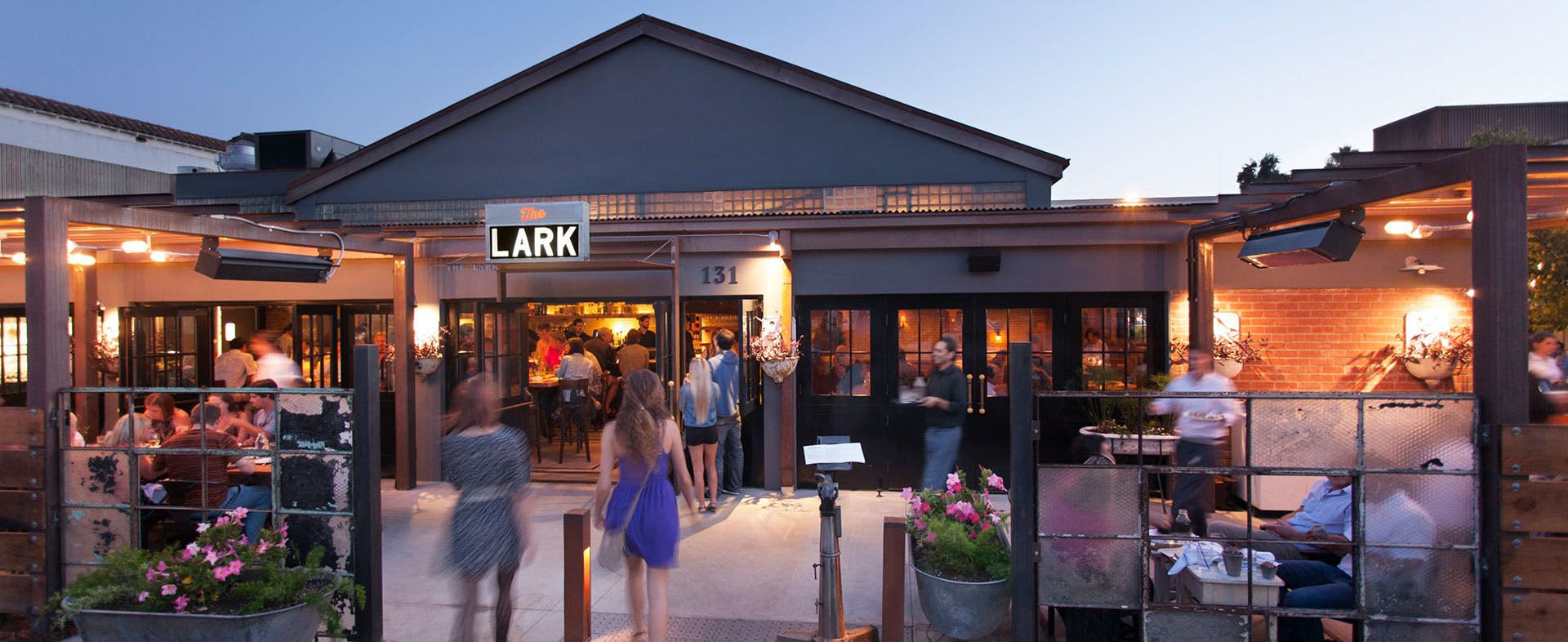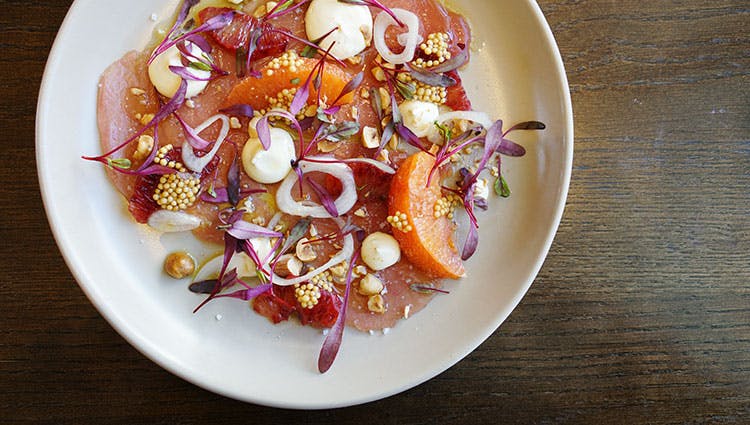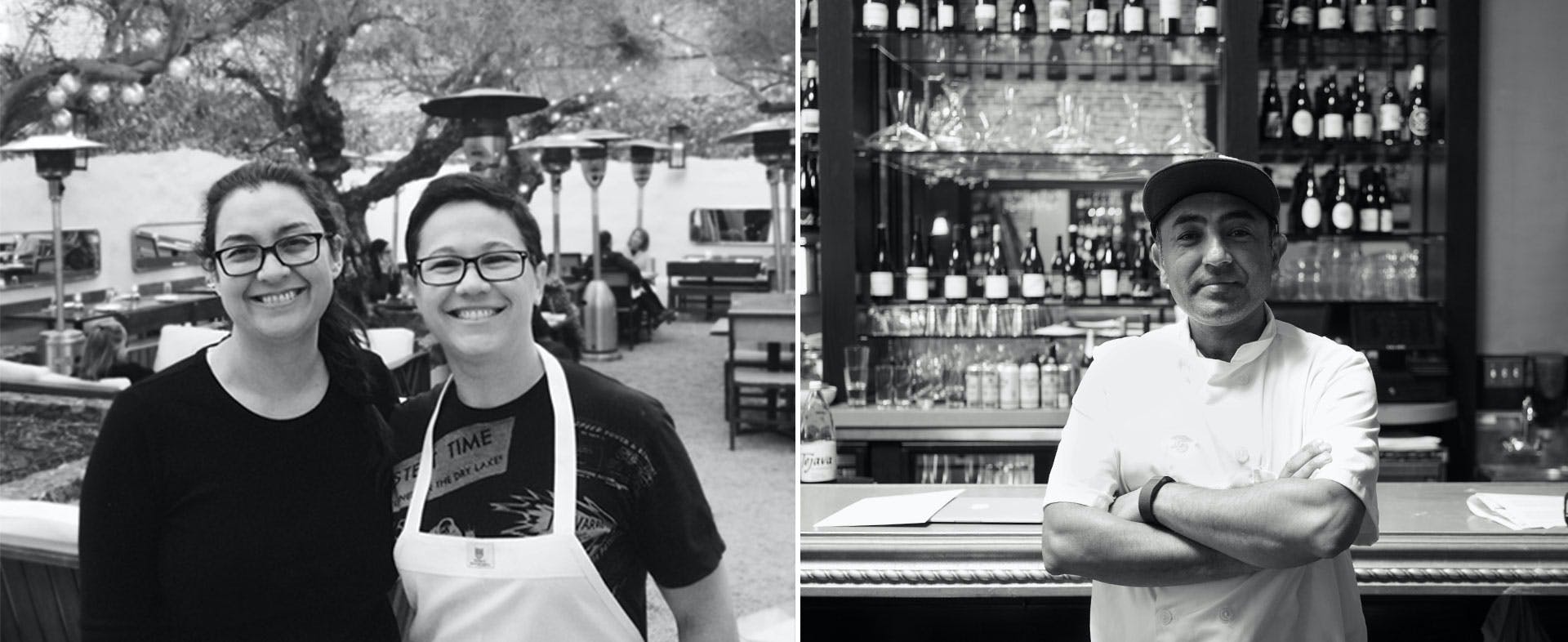“I looked around. It was the bluest of blue skies. I'd always imagined California should be like this," Jason Paluska writes in his new cookbook, Around the Table. That was the chef's first impression of Santa Barbara, the Central Coast town roughly an hour north of Los Angeles, where he first helped open The Lark in 2013.
Back then, the sleepy beach town was primarily known for being a) where Oprah lives and b) the epitome of California stereotypes. Flip-flops are year-round attire, most people do in fact surf and the biggest stressor in life is deciding which excellent taqueria to go to.
Five years later, Santa Barbara is no longer part of that mysterious gray area sitting between Los Angeles and San Francisco. And it's not just because people have finally explored its laid-back lifestyle or the sparkling blue coastline that's earned it the nickname the American Riviera. Chefs, who've burned out and grown tired of high-stress, big-city kitchens, have been quietly discovering the city, too, which they're calling one of the best places in the country right now to have a restaurant.
The Lark in Santa Barbara | Photo: Erin Feinblatt
Just ask Alexander La Motte, whose culinary résumé speaks for itself: After graduating from The Culinary Institute of America, he worked under Daniel Boulud and Thomas Keller before taking on the executive chef role at the Four Seasons in San Francisco. Yet he now calls this city of just 90,000 home, where he's free to flex his culinary freedom at his restaurant, Blackbird, without the pressure of Pete Wells or Michael Bauer dropping in for dinner. "I want to give my guests a creative and well-presented dish in a comfortable atmosphere," he says. To him, being in a smaller city allows restaurants to "expand their creativity without holding onto older, formal practices."
Of course, there are plenty of small cities in America, but Santa Barbara holds another key advantage: Nestled between the Santa Ynez mountains and the Pacific Ocean, and just a few miles from acres of vineyards, countless ranches and fertile farms, few other places in the country are as bountiful.
Convivo's raw tuna carpaccio | Photo: Andrew Bui
"I felt like we weren't giving up anything by coming to SB," chef Peter McNee says of the produce. He's a Bay Area transplant who ran an esteemed Italian restaurant and is currently cooking what he calls "nomadic Italian" food at recently opened Convivo. His menu focuses more on the region's pure ingredients versus trends that will get him noticed on Instagram. Raw tuna doesn't involve avocados or ring molds, but is instead decorated with local citrus and hazelnuts. The bucatini with spicy tomato sauce and pancetta is simple and something you could technically cook yourself, but at the same time, why bother when McNee does it so well?
"Santa Barbara is where everything is grown," Lauren Herman, chef of Smithy Kitchen + Bar, adds. "So it's fresher, as opposed to by the time it drives to L.A. in a hot truck for the farmers' markets down there." Herman, who was the longtime chef de cuisine of Suzanne Goin's restaurant, A.O.C., moved to the area with her wife (and Smithy's pastry chef), Christina Olufson, three years ago.
Everybody's humble and wants to work hard.
"They pick stuff on Tuesday, and there's a market the same day right here in Downtown, so you get it right when they pick it," Olufson excitedly chimes in. Plus, there's another important aspect of running a restaurant in Santa Barbara the couple enjoys.
"Everybody's humble and wants to work hard. It's fun having these clean-slate kids who aren't jaded," the former L.A. chefs joke.
Left: Lauren Herman & Christina Olufson of Smithy Kitchen & Bar, Right: Jessi Singh of Bibi Ji
Photos: Smithy Kitchen & Bar, Andrew Bui
One of the biggest names to make the move to Santa Barbara lately is Jessi Singh, who, after opening restaurants in New York City and San Francisco, decided to call the Central Coast his new home. "There's a big migration happening into small towns for chefs who can't make it in the big city. Here, I can pursue what I really like," he says. In this case, it's using Santa Barbara's renowned seafood, like incorporating golden sea urchin in Indian biryani or roasting just-caught spot prawns in a tandoor oven.
The menu at Bibi Ji | Photos: Collin Dewell
Another part of the allure for Singh is just how much easier it is to run a restaurant. He's developed direct relationships with local fisherman who don't have to upcharge him for delivering up to the Bay, and on certain days of the week, he can walk right outside his restaurant, Bibi Ji, to buy produce straight from farmers at the downtown market. More affordable rent also means he can live closer to his restaurant than he ever could before, allowing more time to spend with his family.
"Even if I just break even, I'm happy with that," he concludes. "My big concern is that I now get to have some form of lifestyle."
Left: The entrance to the Lark, Center: Grilled red snapper, Right: Jason Paluska
Photos: Rob Stark, Macduff Everton A few years ago, chefs were escaping to Los Angeles for the same reason they're now headed to the Central Coast: better access to ingredients, less pressure in running an independent restaurant and a chance to find the mythical unicorn known as work-life balance. As of today, Santa Barbara is home to one of the highest restaurants per capita in the country.
"The city is in a transitional phase," Herman says, recounting the increasing number of guests she gets each night at Smithy. "I think it's going to continue to grow." And with the 101 highway just reopened after the devastating Thomas Fire that closed off the area, it's the best time to visit before everybody else does and grab a table at a restaurant—including The Lark.
Now one of the town's most celebrated gems, The Lark dishes food that is just as exciting as when Paluska became one of the first chefs with a pedigree to make the transition from a big city. House-made porchetta di testa comes adorned with roast strawberries, West Coast oysters are bracingly refreshing thanks to a tangerine granita and vegetable dishes are all sourced from within 30 miles, without having to boast about it on the menu.
"I knew this would be a life-changing event," Paluska recalls of stepping off the plane into Santa Barbara for the first time. "I repeated to myself, 'You have to make this happen. Just look at this place!'"
Welcome to TT on Tour, where Tasting Table's editors guide you through everything you'll want to eat, drink and do in rising travel destinations around the world.




